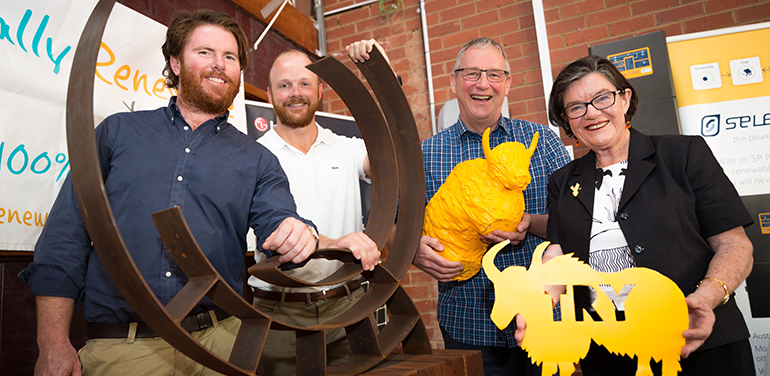
Community Power Project Celebrates Energy Milestone
A remote Victorian town is closer than ever to its goal of running entirely on renewable energy by 2022, after hitting the major milestone of generating enough solar to power over 170 homes for a year.
Totally Renewable Yackandandah (TRY), the community group behind the project, announced on Friday that the Victorian Alpine region town had produced one gigawatt hour of energy – enough power to run the Melbourne Cricket Ground’s light towers for three years.
Launched at the end of 2017 in partnership with energy company, Mondo, the mini-grid is powered by 200 homes equipped with a combination of rooftop solar and battery storage, with excess energy going back into the grid to be shared with the rest of the community.
Each participating home was also given an “Ubi”, a device developed by Mondo that monitors energy use and emissions in the individual household, as well as the rest of the community.
TRY president Matt Charles-Jones told Pro Bono News while Yackandandah was still a way off reaching the 100 per cent renewable energy target, celebrating interim milestones was important.
“When we first started, the 100 per cent goal seemed so far away, so it’s really important for us to have interim milestones, because it’s something tangible we can grab hold of,” Charles-Jones said.
Rob Asselman, from Mondo, said the milestone was a testament to Yackandandah’s collaborative spirit and determination to achieve it’s renewable energy goal.
“Yackandandah have been an amazing community to work with in terms of their willingness to just roll up their sleeves and give it a go,” Asselman told Pro Bono News.
“The notion of a mini grid really takes cooperation from a community where people are going to come together and work on something that is a little bit harder, time consuming, and more expensive than just getting a standalone solar system, but they are thinking for the future which is great.”
With 13 other community energy projects in the northern region of Victoria, Charles-Jones said he hoped this would be an example of how community power could work effectively.
“Yackandandah making this progress provides a really tangible and concrete example of what happens when a group of people put their heads together and set a target and then go around investigating how to achieve that target,” he said.
Independent federal member for Indi, Cathy McGowan, said the project was an “important proof point” on how community projects like this could work.
“This trailblazing project is an important proof point, not only for Indi but for the rest of Australia, that when community, industry and government work together we can make real strides forward on achieving a reliable, renewable, affordable energy future,” McGowan said.
As well as reaching the goal of 100 per cent renewable by 2022, Charles-Jones said the community’s next aim, once there was enough energy produced, was to work with the rest of the region to help community-owned power retailer, Indigo Power, service northern Victoria.
“Our goal is to support the uptake of renewable energy and to provide a really robust community-based platform to support that and reinvest back into local communities,” he said.
This article was originally published online HERE.
